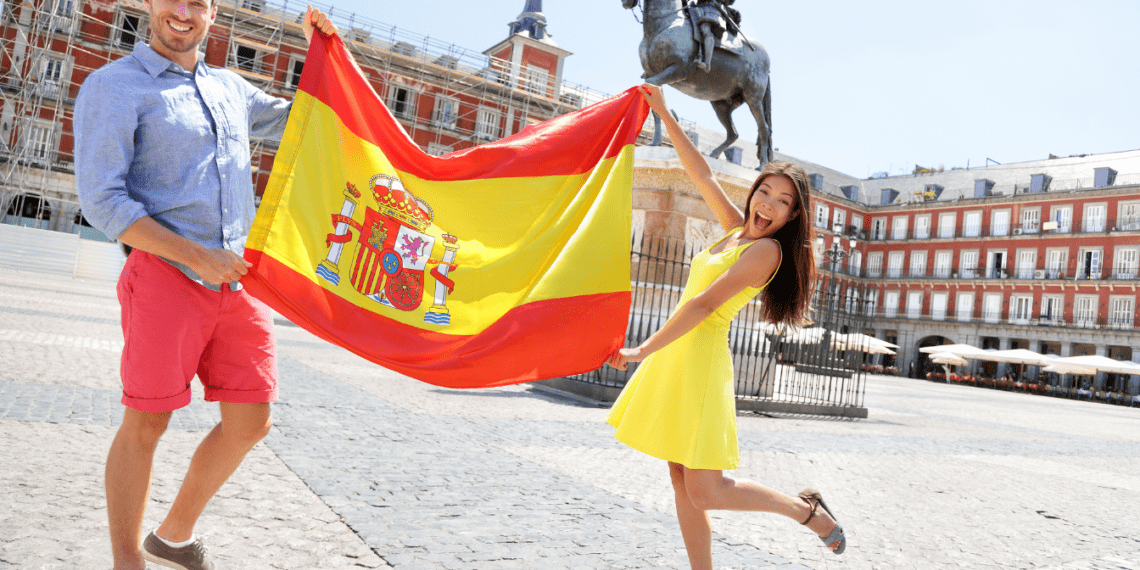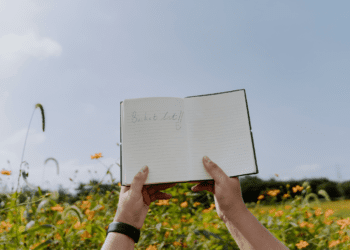Have you ever dreamed of diving into Spain’s lively culture? Spain is known for its passionate Flamenco dances and tasty dishes. You will be amazed by its deep history, beautiful art, and friendly locals. Get ready for a journey full of unforgettable experiences.
Key Takeaways
- Discover the UNESCO-recognized art of Flamenco, a soulful dance that embodies the essence of Spain
- Savor the diverse regional cuisines, from the iconic paella of Valencia to the hearty Asturian dishes
- Explore the architectural gems of Spain, from the whimsical creations of Gaudí to the grand historical structures
- Immerse yourself in the vibrant festivals and celebrations that showcase the country’s cultural traditions
- Uncover the linguistic diversity of Spain, with co-official languages like Catalan, Basque, and Galician
Immerse in Traditional Flamenco Dances
Flamenco is a passionate dance from Spain. It captures the hearts of people everywhere with its deep emotions and exciting beats. It started in Andalusia and brings together dance, music, and singing to showcase Spain’s rich culture.
Flamenco: The Soulful Dance that Embodies the Essence of Spain
Being a fan of dance, flamenco’s raw emotion always gets me. I took classes to dive deep into this lively tradition while in Spain. I learned the fancy footwork and expressive arm motions. They tell stories and show the real meaning of this traditional dance.
Flamenco is all about personal expression. It shows the true spirit of Spain through hand clapping, singing, and dancing. When all these parts come together, it creates a moving show. It feels like you’re in the heart of Andalusian culture.
I learned a lot about flamenco through my classes. Roma, Jewish, and Arab cultures have greatly influenced it. The footwork and arm movements are unique to flamenco. I also found out about the different musical styles. They each carry their own emotion and story.
| Flamenco Fact | Statistic |
|---|---|
| Flamenco has expanded globally | There are more flamenco academies in Japan than in Spain |
| Flamenco originated in Andalusia, Southern Spain | The art form has been documented for the past two hundred years |
| The Roma people have had a significant influence on flamenco | Helping spread it across Spain and beyond |
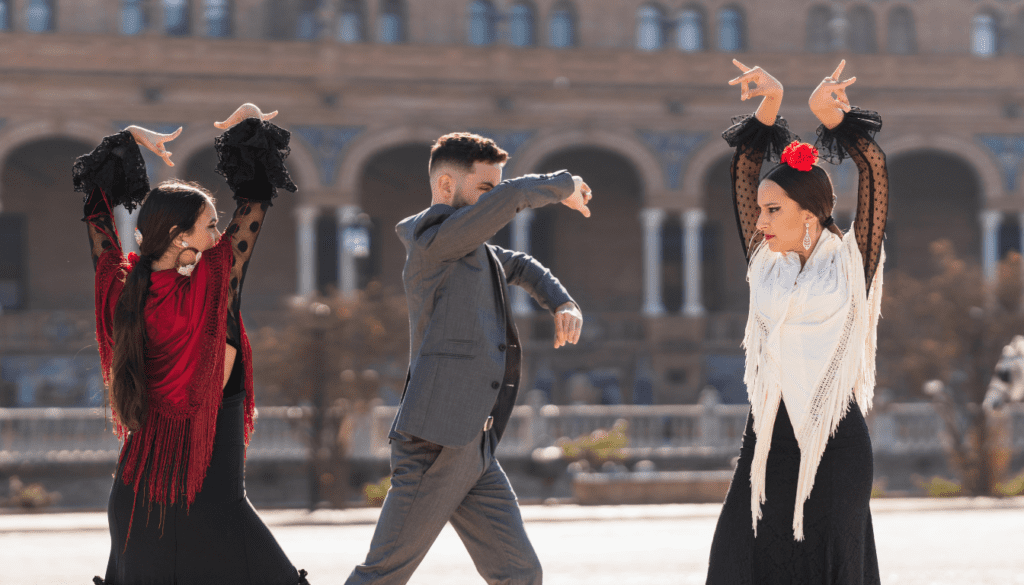
Exploring flamenco has shown me its deep emotional pull. Dancers can share their deepest emotions through the steps. You can feel anything from sadness to intense passion. This power to connect with people’s hearts makes flamenco timeless.
“Flamenco is a poetic and passionate dance that speaks to the very essence of the Spanish spirit.”
Everyone, whether you’re new or experienced, should try flamenco. It will change you and stay with you forever. By understanding its history and culture, you grasp the beauty of Andalusian dance. It’s an experience that leaves a lasting impression.
Savor Regional Spanish Cuisine
Spain is a top food-lover’s dream, filled with unique dishes from each area. Try the Galician octopus‘s freshness or dive into Asturian cuisine‘s heartiness. Each flavor leads you on a journey through Spain’s heart and soul.
Indulge in Spanish Cuisine to Awaken Your Senses
Spanish food is more than just taste; it’s a whole experience. Start by picking the best ingredients at local markets. Then, enjoy family-secret recipes in cozy restaurants.
Eating in Spain is all about sharing and connecting. After the main dish, people linger to talk, known as “sobremesa.” This shows the beauty and togetherness of Spanish culture. By trying different foods, you feel Spain’s deep traditions and heritage.

“Spanish food culture is deeply rooted in the country’s history, with each region showcasing its unique dishes and culinary traditions.”
Whether by the sea or in the heart of the country, Spain’s food is a rich mix. Taste the saffron in paella, enjoy the jamón ibérico, or join the tapas culture. Each bite is a step into a world of vivid tastes and experiences.
Explore Spanish Architectural Gems
Spain is full of stunning architectural wonders mixing old history with new design. You must delve into these wonders to understand Spanish culture. Each famous place, from Barcelona’s Sagrada Familia to Granada’s Alhambra, shares the story of Spain’s rich past.
Finding the less known architectural treasures can be just as rewarding. This way, you see the true beauty of Spain’s past and present. You’ll come to deeply value Spain’s historical and artistic heritage.
Stroll Through History: Marvel at Spain's Architectural Wonders
Spain is second in the world for UNESCO World Heritage Sites, behind only Italy. This shows its special place in world culture and architecture. Spanish buildings reflect a mix of styles through the ages, from Roman to Contemporary.
Styles like Mudéjar, Baroque, and Neoclassicism shaped not only Spain but also Latin America’s architecture. Contemporary Spanish architects like Rafael Moneo and Santiago Calatrava make big impacts today.
| Architectural Style | Notable Examples |
|---|---|
| Mudéjar | Aljafería Palace in Zaragoza, Alcázar of Segovia |
| Baroque | Catedral Nueva in Salamanca, Basilica of Our Lady of the Pillar in Zaragoza |
| Neoclassical | Palacio Real in Madrid, Royal Site of San Lorenzo de El Escorial |
Visiting Spain’s architectural jewels opens a door to its rich past and creative spirit. From the amazing Sagrada Familia to the stunning Alhambra, each place shows Spain’s deep history and lively culture.

Join Exuberant Spanish Festivals
Step into the lively world of Spanish festivals. You’ll see the country’s love for life and traditions. Experience events like La Tomatina, the Running of the Bulls, and the colorful Feria de Abril. These are your chance to explore Spanish culture from the inside.
Wearing traditional clothes, you’ll feel part of the crowd. Taste local dishes, move to the beat of flamenco, and meet new people. Join these celebrations to fill your memories with Spain’s vibrant spirit.
| Spanish Festival | Location | Highlights |
|---|---|---|
| La Tomatina | Buñol, Valencia | The world’s largest tomato fight festival, attracting thousands of participants annually. |
| Semana Santa (Holy Week) | Nationwide, with notable celebrations in Seville, Malaga, and Toledo | Elaborate processions and religious floats, showcasing the country’s deep-rooted Catholic heritage. |
| Feria de Abril | Seville, Andalusia | A week-long celebration known for flamenco music, traditional dances, vibrant horse parades, and colorful casetas (marquees). |
| San Fermín | Pamplona, Navarre | Famous for the “Running of the Bulls” event, alongside music, dance, and Basque cultural celebrations. |
From the tomato madness of La Tomatina to the deep traditions of Semana Santa, there’s something for everyone. Or, you could enjoy the music, dances, and parades of the Feria de Abril. These festivals are an authentic way to enjoy Spain’s culture. Have fun, learn local habits, and make memories that’ll always take you back to Spain.

Unlock the Richness of the Spanish Language
Learning the Spanish language is key to experiencing Spain’s lively culture. It deepens your understanding of the culture and helps you connect with people on a deep level. Make use of classes, language immersion programs, and apps to become better at it.
Understanding Spanish literature, music, and films gives you a look into the country’s history. It makes daily life easier and lets you have better conversations. You’ll also notice and understand the smaller parts of Spanish culture.
Spanish is the second most spoken language in the U.S., after English. There are more than 490 million people who speak it around the world. Job opportunities that require Spanish are plenty, showing its value in the working world.
Learning Spanish can lead to exciting jobs, such as being an interpreter or teacher. It might also offer you chances to study abroad. This way, you’ll learn the language and culture first-hand.
If you’re starting or improving your Spanish, go for it. Discover the beauty of Spain’s culture. This journey will bring many benefits to your life.

“The limits of my language mean the limits of my world.” – Ludwig Wittgenstein
Discover Spain's Rich Artistic Legacy
Spain is known for its many museums and galleries. They hold amazing artworks from different periods. The Prado Museum, Guggenheim Bilbao, and the Picasso Museum stand out among them. These places show Spain’s colorful art history.
You can see classical pieces by famous artists like Goya and Velázquez. Also, check out modern art in Spain’s contemporary galleries. Don’t miss events that show new artists’ work. It’s a great way to see creativity in action.
Explore the stories in the art and learn from interactive displays. Let the beauty and variety of Spain’s art culture amaze you. This helps you understand the country’s deep culture and creativity.
More than 1,600 museums in Spain attract millions every year. It boasts thousands of significant sites for art lovers. Spain is truly a paradise for those who love culture.
“Spain is the country with the fourth largest number of UNESCO World Heritage sites globally, offering a vast range of cultural experiences for exchange students and visitors alike.”
Spain’s architecture is something special. It mixes Christian, Jewish, and Muslim designs. From the Sagrada Familia in Barcelona to the Alhambra in Granada, these sites are both beautiful and meaningful. They reflect Spain’s diverse historical and cultural journey.
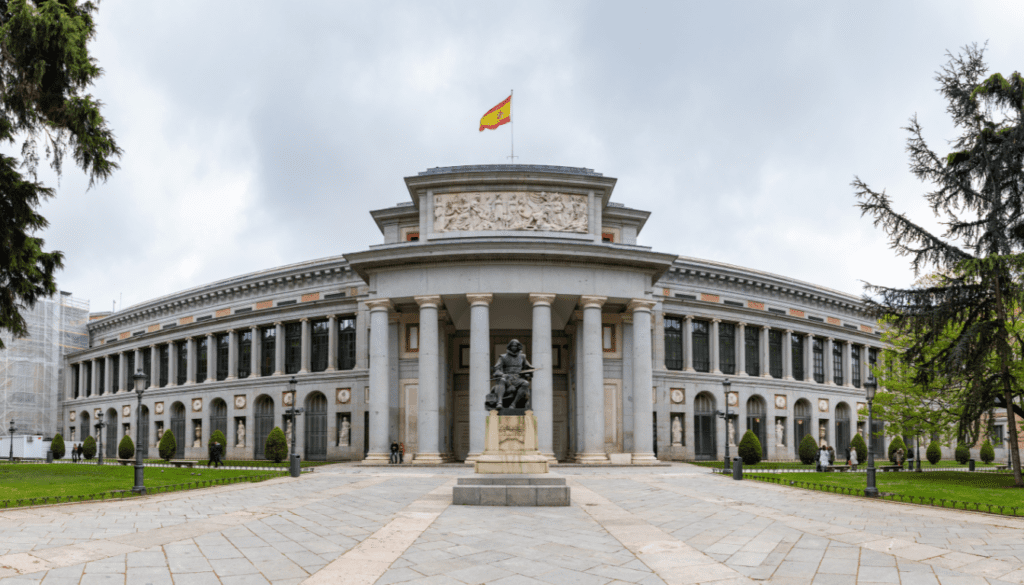
- Discover the Prado Museum‘s collection of Velázquez, Goya, and El Greco masterpieces in Madrid.
- Explore the Reina Sofia Museum‘s modern and contemporary art, including Picasso’s renowned “Guernica”.
- Marvel at the Guggenheim Bilbao‘s stunning contemporary art exhibits housed in a Frank Gehry-designed architectural landmark.
- Delve into the rich history and cultural influences that have shaped the city of Toledo, a UNESCO World Heritage Site.
- Immerse yourself in the stunning Alhambra Palace in Granada, a Moorish architectural masterpiece.
Whether you love art or just want to explore, Spain is full of cultural delights. Engage with Spanish art and culture. Let it spark your creativity and passion for the arts.
Experience Vibrant Latin American Carnivals
Dive into the lively music and exciting parties that make Latin American culture rich. Visit places like Argentina’s Carnaval of Gualeguaychú and Mexico’s Carnaval of Veracruz. These events showcase a mix of local heritage and European culture.
Carnaval: An Explosion of Colors and Joy across Latin America
Carnaval celebrations highlight the diverse culture of Latin America. They mix traditional ceremonies with European customs. The result is a colorful, musical, and joyous celebration. You’ll see this in the festive vibes, bright outfits, and the spirited street festivities.
The Carnaval of Gualeguaychú in Argentina is a standout event. Lasting for weeks, it includes grand parades, amazing outfits, and lively music. In Carnaval of Veracruz, Mexico, you’ll enjoy Caribbean-inspired activities. This includes burning effigies, dances, and the crowning of the Carnaval Queen.
“Carnaval celebrations in Latin America are a true feast for the senses, where the fusion of cultures comes alive in a kaleidoscope of colors, sounds, and unbridled joy.”
The Carnaval tradition also shines in other areas. The Rio de Janeiro Carnival in Brazil is a famous one, drawing millions every year. The Barranquilla Carnival in Colombia is also special. UNESCO calls it a “Masterpiece of the Oral and Intangible Heritage of Humanity.”

For those who love languages, Carnaval celebrations are a great way to learn about Spanish. They also teach you important aspects of the Spanish-speaking world’s culture. Enjoy the mix of old rhythms and modern happiness in Latin America’s celebrations. They are sure to enchant your senses and spirit.
Trace the Roots of Spanish Culture
Spain’s culture has deep ties with its history under Roman rule. For more than six centuries, the Romans governed Spain. They brought their language, building styles, and way of life. These additions became part of Spain’s culture, which we still see today.
The Roman Influence on Spanish Language and Architecture
The impact of the Romans is clear in Spain’s language. More than 75% of the Spanish words come from Latin. This link shows the strong and long-lasting effect of the Roman Empire.
Roman architecture is also widespread in Spain. Places like Barcelona and Seville show unmistakable signs of Roman design. The Gothic Quarter and Puente de Triana in Seville are examples. They are reminders of the Roman architectural legacy.
| Roman Influence in Spain | Impact on Spanish Culture |
|---|---|
| Language | Over 75% of Spanish vocabulary is derived from Latin |
| Architecture | Iconic structures like the Gothic Quarter and Puente de Triana in Seville |
| Customs and Traditions | Many Spanish cultural practices have their roots in Roman customs |
The Roman impact on Spain goes deeper than just language and buildings. They have shaped Spain’s entire cultural foundation. This connection with ancient Rome is a significant part of Spain’s identity. It’s a reason for both pride and interest for people in and out of Spain.
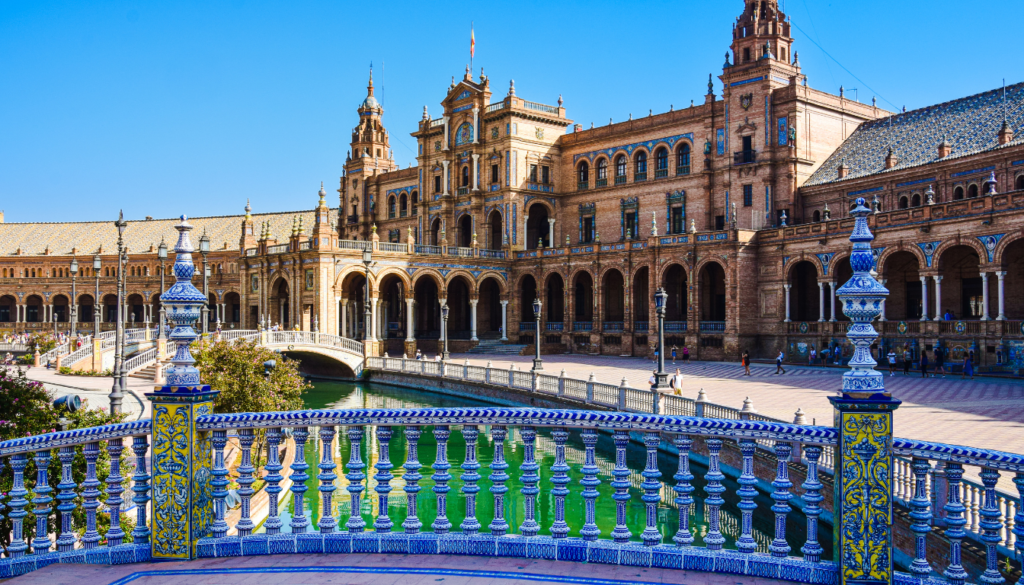
Spanish cultural experiences
Spain’s culture is both vibrant and diverse, offering many chances to dive in. Travelers can connect deeply by getting to know customs, language, and art. This helps build strong bonds and enjoy Spain’s rich heritage. From exciting Flamenco dances to tasty local dishes, every part of Spain welcomes you to a life-changing tour of its culture.
The Spanish language is a gateway to this rich culture. By taking classes in places like Andalucía, you can immerse yourself for over 50 hours. This may lead to a language certificate that proves your ability. Meeting and talking to Spanish young people helps you improve your Spanish and understand the language better.
Spain’s architecture tells a story of its varied history and cultures. Places like the Alhambra and Barcelona’s modernist buildings are like stepping into the past. By exploring these architectural wonders, you get a better sense of Spain’s art history. Participating in Spanish festivals, like Valencia’s Fallas or the Semana Santa, lets you see deep into its traditions.
Getting to know the local people is also key to an authentic Spanish experience. Enjoying tapas in Spain’s busy streets or tasting its diverse cuisine shows the depth of Spanish hospitality. This connection brings a lot of joy.
Spain is the world’s second most visited country, and for good reason. Its culture is rich with centuries of history, art, and traditions. Going on a deep dive into Spain’s culture unlocks many secrets and leads to unforgettable memories.

“Traveling – it leaves you speechless, then turns you into a storyteller.” – Ibn Battuta
Uncover Mesoamerican Cultural Influences
Latin culture is diverse, mixing old traditions, new ideas, and stories of the past. The Mesoamerican cultures, like the Aztecs and Mayans, play a big role in this. They are famous for their myths, grand buildings, and smart calendars. Even today, their influence can be seen all over Latin America.
The Mexican Day of the Dead is a great example. It celebrates life after death, a key Aztec belief. The colorful festival, with its special altars and foods, shows how strong Mesoamerican culture still is.
The Legacy of Mesoamerican Cultures in Latin America
Their mark isn’t just in festivals, but also in breathtaking buildings. The Mayans and Aztecs built amazing pyramids and cities. These places draw people from everywhere, marveling at the ancient brilliance.
The Mayan calendar was not only smart but also deeply spiritual. It’s a part of many Latin American customs today. Together with Spanish culture, they’ve created a unique mix that fascinates people all over the world.
| Mesoamerican Civilization | Key Contributions |
|---|---|
| Aztec | – Sophisticated calendar system- Vibrant mythology and religious practices- Impressive architectural feats, including the Tenochtitlán capital |
| Mayan | – Highly accurate calendar system- Pioneering advancements in mathematics and astronomy- Iconic pyramids and temple complexes |
| Olmec | – Earliest major Mesoamerican civilization (1200-900 B.C.)- Developed writing system and calendar- Influential on later cultures, including the Maya and Aztec |

“The fusion of Mesoamerican and Spanish cultures has resulted in a vibrant tapestry that continues to captivate the world.”
The Day of the Dead and ancient buildings remind us of Mesoamerican cultures’ rich legacy. As we dive deeper into Latin America’s culture, we see how these ancient societies shaped our world today.
Engage with the Local Community
To dive into Spain’s culture, connecting with locals is key. Joining events and traditions lets you understand their way of life. You’ll make strong connections that stay with you and those you meet.
First, go to local events and festivals. This is your chance to feel the Spanish spirit. From flamenco music and dancing to community gatherings, you can dive right in.
Volunteering is another great step. You can help out in different ways, from community work to teaching. It’s a chance to not only give back but also learn more about Spanish life and culture.
Walking around, don’t shy away from talking to locals. They are friendly and eager to share. Being open-minded will show you the real Spain, with its customs and stories.
Getting involved in the community leaves a mark. You’ll cherish the memories and better understand Spain’s rich culture. This journey of cultural exchange will truly enrich your experience.
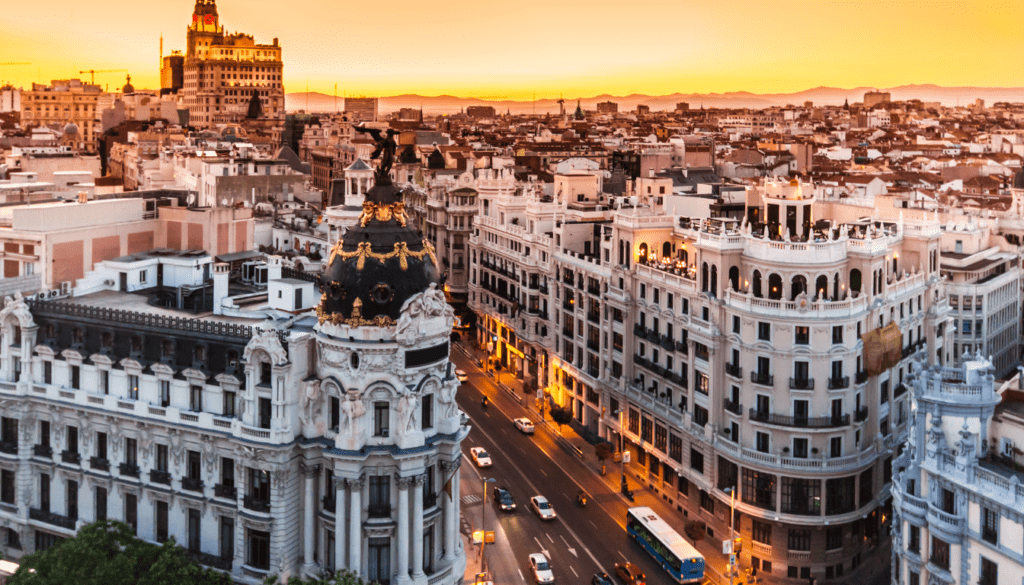
“The best way to truly understand a culture is to immerse yourself in it, to engage with the people, and to embrace their way of life. That’s the essence of cultural exchange.”
Celebrate Regional Dance Traditions
Spain is full of unique dances that show the country’s rich culture. Besides Flamenco, there are many other exciting dances from each region.
The Jota from Aragon highlights footwork and castanet rhythms. The Muñeira in Galicia and Asturias uses Celtic influences and the lively Galician bagpipe, or gaita.
The Sardana represents Catalonia and is danced to la ‘cobla’ music. It brings people together to express Catalan culture through dance.
Learning about these dances shows how varied Spain’s culture is. Each dance shares a part of local life, from music to customs.
“Spanish dancing has evolved from traditional folklore to modern interpretations, captivating audiences worldwide with its intricate footwork, graceful arm movements, and powerful facial expressions.”
From Andalusia’s passionate Flamenco to Galicia’s lively Muñeira, Spain’s dances tell a story. By learning about these dances, visitors can better understand Spain’s diverse culture.

| Dance | Region | Key Characteristics |
|---|---|---|
| Jota | Aragon | Percussive footwork, use of castanets |
| Muñeira | Galicia, Asturias | Celtic influences, accompanied by Galician bagpipes |
| Sardana | Catalonia | Communal dance, performed to the rhythms of a ‘cobla’ band |
| Flamenco | Andalusia | Intense and fiery, with intricate footwork and expressive movements |
Discover Spain's Linguistic Diversity
Even though Spanish is Spain’s official language, the country is diverse. It has five co-official languages. These include Castilian, which is Spanish, and others like Catalan and Basque.
In Spain, Catalan is spoken by over 7 million people. It’s official in Catalonia and used in other places. Valencian, similar to Catalan, is official in Valencia. Basque is original to the Basque Country, used by over a million. Galician is spoken by 3 million in the west of Spain.
Spain’s different languages are not just words. They show the country’s vast cultural heritage. Understanding these languages helps us explore Spain’s unique traditions and identities.
Celebrating Spain's Linguistic Mosaic
- Catalan is Catalonia’s main language, while Valencian is also important in Valencia.
- The Basque Country uses Euskara, its ancient language, spoken by over a million.
- Galician, influenced by Celtic, is key in Galicia in the northwest.
- Madrid shows how different Spanish cultures come together, each with unique languages.
Learning about Spain’s languages is key to truly getting to know the country. Each language reflects a different aspect of Spain’s rich culture. Exploring these aspects enriches anyone’s travel experience.
“Language is not just a means of communication, but a reflection of a people’s identity, history, and way of life.”
Celebrating Spain’s diverse languages shows its pride in cultural richness. From the lively Catalan in Barcelona to the spirited Basque in the north, these languages enhance Spain’s beauty.
Appreciate the Fusion of Cultures
The mix of Latin and Spanish cultures brings together many different people. Latin traditions started with the Aztecs, Mayans, and Incas long ago. Spanish elegance has added layers of heritage to it. Together, they offer a diverse world of amazing flavors, music, and tales. You can learn more about this cultural blend.
This blend also includes Mesoamerican and Roman influences. From Latin America‘s lively festivals to Spain’s grand buildings, every part tells a fascinating story. The merge of Spanish and Latin American cultures has spread across the globe. It has created a rich mix of experiences for those open to it. Discover more at this article.
Think about the world of multicultural experiences this fusion has opened up. It’s a place where different tastes, rhythms, and stories meet. Don’t miss the chance to be part of this vibrant journey. For further reading, check out this piece.
| Cultural Fusion Examples | Impact |
|---|---|
| Nikkei cuisine (Japanese and Peruvian) | Emergence of a unique culinary tradition |
| Chicken Tikka Masala (Indian and British) | Blending of flavors from different culinary traditions |
| Sushi burritos (Japanese and Mexican) | Creation of innovative dishes through cross-pollination |
| Banh mi sandwiches (French and Vietnamese) | Fusion of cuisines leading to new culinary experiences |
Other examples include mixing Mediterranean and Indian food, or creating jazz from various traditions. These all show how cultural diversity brings us together. The blend from Spain and Latin America teaches us about beauty, strength, and the ability to evolve.
“The fusion of cultures is the best way to preserve the richness of our diversity.”
By celebrating cultural diversity, our lives can change for the better. We can enjoy a variety of experiences and learn from one another. Embracing cultures like the Spanish and Latin American blend opens doors to a bright future. It continues to excite and unite people everywhere.
Conclusion
Exploring real Spanish culture is a magical adventure. It’s about more than just food or dancing. You’ll discover historic buildings, join lively festivals, and feel the heart of Spain.
Be ready to learn, experience, and connect with new friends. Open up to the beauty of Spanish culture. ¡Viva España!
As you start your immersive journey, Spain’s variety and richness will surprise you. You’ll find excitement in cities and peace in the countryside. Raise a toast to Spain and all it has in store for you.
FAQ
What are some key aspects of Spanish cultural experiences?
Spanish cultural experiences are rich and varied. You can enjoy traditional Flamenco dances and taste delicious regional cuisine. Explore amazing architecture and join in on joyful festivals. Don’t forget to learn the Spanish language and appreciate Spain’s art history.
How can I experience the passion of Flamenco dance?
To feel the passion of Flamenco dance, join a class. You will learn the beautiful steps and hand movements, telling stories through dance. This art form reveals the history and emotion of its culture.
What are some must-try regional Spanish dishes?
Try the famous paella from Valencia and the tasty tapas in Andalusia. Don’t miss the Galician octopus. Enjoy the unique food and dining customs to really dive into Spanish culture.
What are some of the architectural marvels to explore in Spain?
Visit the stunning Sagrada Familia and the Alhambra. Don’t forget the Gothic Quarter. You’ll see beautiful structures and learn about Spain’s history and art.
What are some of the vibrant Spanish festivals to experience?
Experience the wild La Tomatina, the famous Running of the Bulls, and the bright Feria de Abril. These events show Spain’s joyful nature and its deep traditions.
How can I immerse myself in the Spanish language?
Learning Spanish is fun and immersive. Take classes or use apps. Also, read Spanish books, listen to music, and watch movies to become fully immersed.
What are some of the artistic treasures to explore in Spain?
Discover art at the Prado Museum, the Guggenheim Bilbao, and the Picasso Museum. These places display a variety of art, showing Spain’s rich artistic history.
What are the vibrant cultural festivals in Latin America that showcase the fusion of Latin and Spanish cultures?
The Carnavals in Argentina and Mexico are great examples. They celebrate religion, history, and joy, mixing Latin and Spanish traditions in a lively way.
How has the Roman heritage influenced Spanish culture?
Roman history shaped Spain in language and architecture. The architecture in cities like Barcelona tells stories of this influence. It remains a vital part of Spain’s identity.
How can I engage with the local community to immerse myself in Spanish culture?
To really be a part of Spanish culture, join in community activities and local events. Talk to Spaniards. This allows you to learn about their life, traditions, and values.
What are some of the regional dance traditions in Spain?
Explore more than just Flamenco. There’s also the Jota, the Muñeira, and the Sardana. Each dance reflects different parts of Spain’s varied culture. It’s fascinating and joyful.
What is the linguistic diversity in Spain?
Spain has more than just Spanish. Five regional languages are also spoken. Each area has its own language, showing the local culture and history.





















